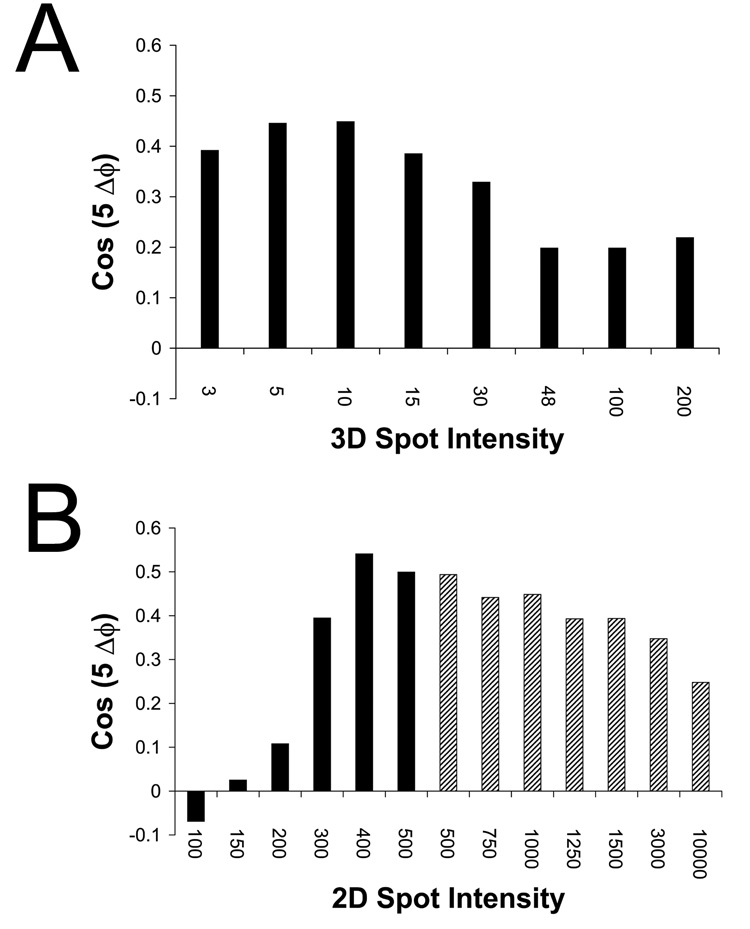Figure 5.
Accuracy of the Eulerian angle ϕ (the rotation about the unique 5fold) depends on the balance of intensities between 2D and 3D spots. A dotted reference was used to orient 2D dotted images. The resulting ϕ was compared with the final value for ϕ determined for each image by Bubeck et al (2005b), and reported as the cosine of five times the ϕ error: +1 represents correlated angles, −1 are anti-correlated angles, and 0 is random. A) Spotted 2D images (intensity 1000) were oriented using a spotted 3D reference in which the intensity of the spot was 3, 5, 10, 15, 30, 48, 100, and 200 times that of the virus. B) An optimized 3D reference in which the intensity of the spot was either 8 (black bars) or 10 (hatched bars) was used to orient 2D images with various spot intensities: 100, 150, 200, 300, 400, 500, 750, 1000, 1250, 1500, 3000, or 10000. These data show that a balance is required: the dot intensity must be strong enough, relative to the virus, to drive the angular assignment towards the unique 5fold; but weak enough that the icosahedral signal from the virus can dominate the determination of ϕ.

